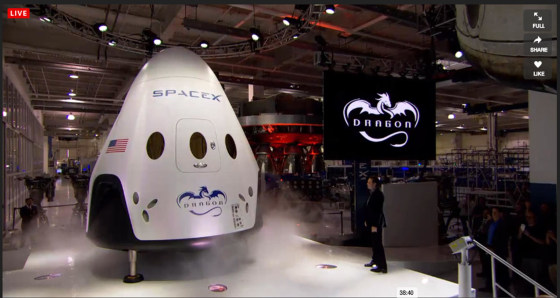HAWTHORNE, Calif. — SpaceX unveiled the spaceship it expects to use to send NASA astronauts to the International Space Station, known as the Dragon V2, at its headquarters on Thursday amid surroundings as glitzy as an auto show.
Maybe that shouldn't be surprising, considering that the company's billionaire founder, CEO and chief designer, Elon Musk, also runs the Tesla electric-car company. His SpaceX venture has even loftier ambitions than Tesla — nothing less than sending colonists to Mars.
"That's where things need to go in the long term," Musk declared Thursday.
The curtain drop on Dragon V2 — and yes, a curtain literally dropped — marks a significant step toward that goal. Hundreds of employees, VIPs and other guests cheered when the spacecraft made its debut, sitting on a stage set up on SpaceX's factory floor.
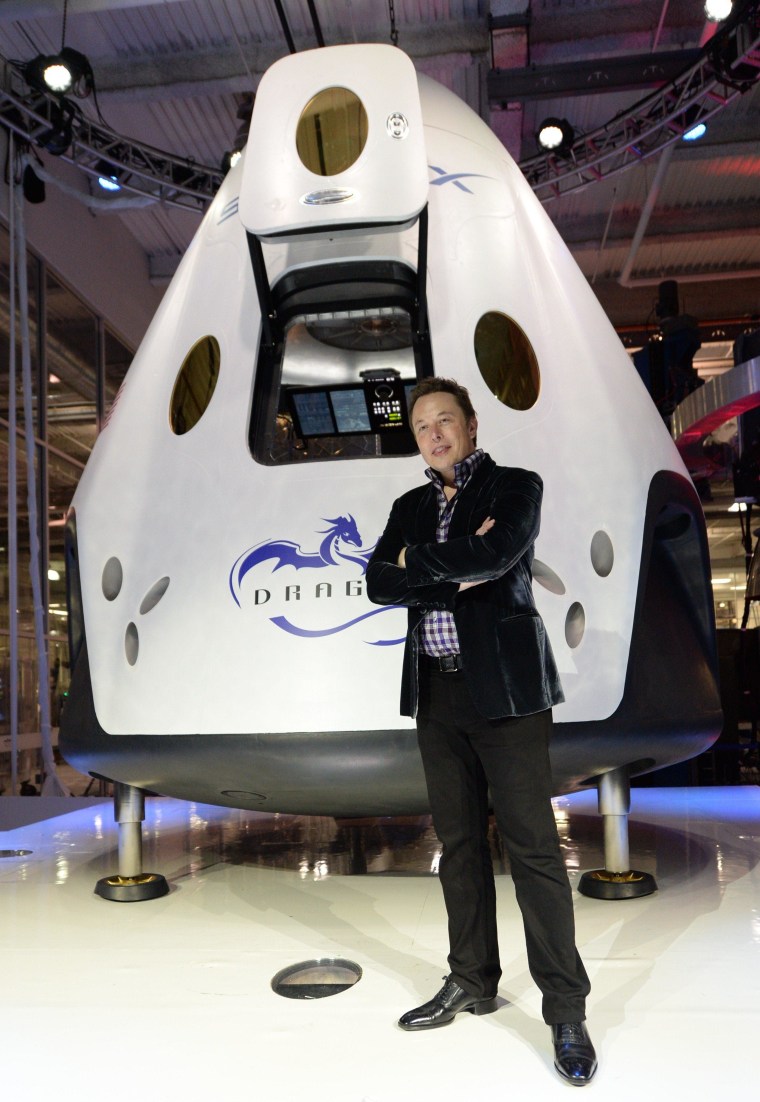
The Dragon V2 could be one of the first U.S-built spaceships to carry NASA fliers since the retirement of the space shuttle fleet in 2011. SpaceX and two other companies, the Boeing Co. and Sierra Nevada Corp., have been receiving more than $1 billion from NASA to develop replacements for the shuttle.
Sometime in the next few months, the space agency is expected to decide which projects will move on to actual spaceflight in about 2017. In the meantime, NASA has to pay the Russians more than $70 million per seat for rides on Soyuz spacecraft. All three U.S. companies say they can beat that price.
After the big reveal, Musk told reporters that the cost of flying seven astronauts to the station on the Dragon could start out at under $20 million per seat, which translates to $140 million for the launch. The cost could fall even further if the flight rate increases, he said.
SpaceX has been flying first-generation Dragon cargo capsules to and from the space station for two years, with the company's Falcon 9 rocket providing the oomph to put the Dragons into orbit. Those gumdrop-shaped spacecraft are not designed to carry people, however.
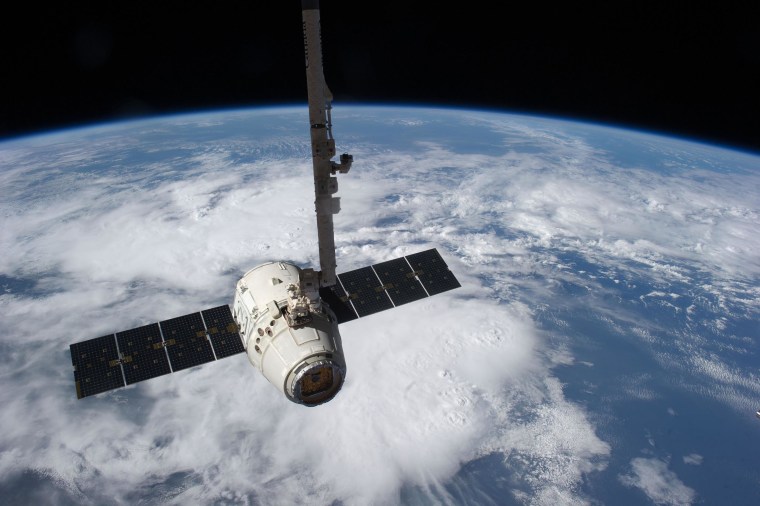
To make the Dragon crew-worthy for NASA, SpaceX redesigned the Dragon to include a SuperDraco thruster system that could push the capsule and its crew to safety if something went wrong during the ascent. The thrusters, which are produced through a metal 3-D printing process, were recently qualified for flight tests.
The company also had to add the seven seats for the crew, as well as life support systems and instrument panels. At one point, a stairway was brought on stage, and Musk climbed into the craft's gleaming metal interior to show off the setup. The crowd watched on huge video screens as Musk hopped from seat to cushioned seat, and finally climbed out again.
"That's going to be a lot easier in zero-G, by the way," he quipped.
Musk said most of the equipment on the Dragon V2 unveiled on Thursday was ready for flight. SpaceX is gearing up for a series of launch abort tests for NASA this year and next. If all goes well, and if NASA continues funding development, Musk said the Dragon V2's first uncrewed flight to orbit could take place by the end of 2015. The first orbital launch with test pilots aboard could follow in 2016, he said, leaving plenty of time to meet NASA's 2017 deadline.
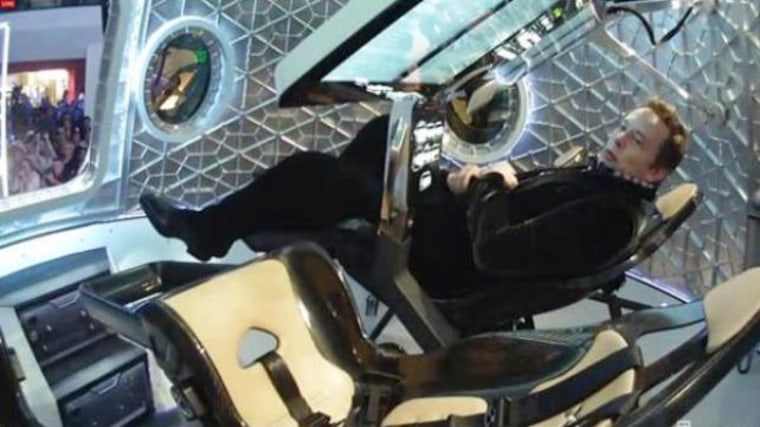
Eventually, SpaceX plans to add landing legs as well, so that the craft can make a science-fictiony touchdown on land rather than having to go through the current routine of splashdown and recovery at sea. "That is how a 21st-century spaceship should land," Musk said.
Test flights of a leg-equipped version of the Dragon, known as the DragonFly, are expected to proceed at SpaceX's facility in Texas once the Federal Aviation Administration gives its approval.
If all those pieces fall into place, the sky would no longer be the limit. SpaceX's Dragon, or other U.S.-built spaceships, could serve as transports to private-sector space stations like the one being designed by Nevada-based Bigelow Aerospace.
"This is going to be a fabulous machine," Robert Bigelow, the billionaire founder of Bigelow Aerospace, told NBC News after trying out the Dragon's seats. "SpaceX deserves all the credit in the world. ... This is really a fork in the road for space exploration."
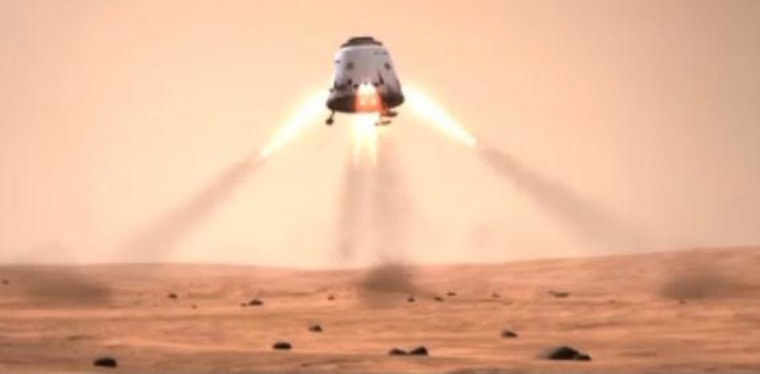
Musk has said a fully loaded Dragon could even be sent to make a touchdown on the moon or Mars — perhaps powered into deep space by SpaceX's Falcon Heavy rocket, which is still under development. SpaceX is also said to be working on an even more powerful launch vehicle, nicknamed the BFR (which could be construed as the "Big Falcon Rocket").
Musk declined to talk about those ultra-long-range projects on Thursday night, but said he hoped the Dragon V2 would help spark a resurgence in America's space ambitions.
"Maybe, to some degree, this helps revive the dream of Apollo," he said.
